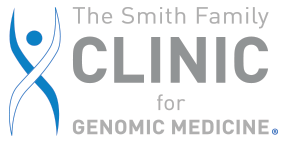Whole genome sequencing in the lab
Learning more about genetic disorder testing.
 In order to use whole genome sequencing to make a diagnosis, the laboratory needs DNA from the patient as well as information from the patient’s physician about his or her medical condition. A blood sample is the most common source of DNA.
In order to use whole genome sequencing to make a diagnosis, the laboratory needs DNA from the patient as well as information from the patient’s physician about his or her medical condition. A blood sample is the most common source of DNA.
Once the DNA is obtained, it is prepared in a special way and put into the sequencing machine. Because of the complexity of sequencing and the amount of information studied, the machine runs for several days. The data comes out of the machine as short pieces of DNA sequence called reads. A computer takes these reads and maps them, creating a picture of the individual’s genome. Once the genome picture is assembled, another program looks for differences in the DNA, or variants, that may be causing the medical condition.
A team of specially trained scientists and physicians in the laboratory review the medical information along with these variants to try to connect the patient’s medical condition to one or more variants. When the laboratory concludes that a particular DNA change is connected to the patient’s disease, it is confirmed with an additional test before the report is issued to the ordering physician. Because of the complexity of the entire process, a final report from whole genome sequencing can take up to 3 months to complete.
At present, the laboratory finds an answer in about 25% of cases in which whole genome sequencing is performed. For the cases without a diagnosis, the stored sequence data can be re-analyzed at the request of the patient’s physician.
If you are interested about the clinic, please contact 256-327-9640 or fill out our contact form at https://smithfamilyclinic.org/contact/

